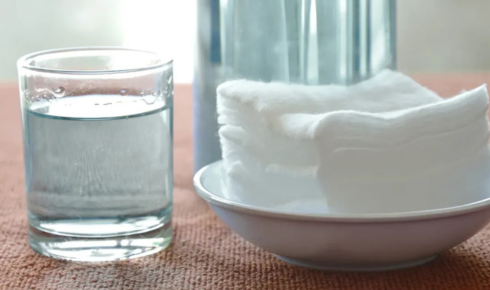Water—it’s something we take for granted every day. We pour it into our coffee, fill up the kids’ water bottles, or run it through our dishwashers without a second thought. But the truth is, water quality can vary dramatically depending on your source, whether it’s a municipal supply, a private well, or even stored rainwater. Some of us notice hard water stains or odd tastes; others may not see anything wrong until a problem crops up in plumbing or appliances. Lately, many homeowners have been turning to a surprisingly simple solution: water hydrogen peroxide.
I first heard about this approach while helping a friend troubleshoot a stubborn sulfur smell in his well water. He’d tried every filter and water softener imaginable, but the odor lingered, and it was driving everyone a little crazy. That’s when a local water expert suggested hydrogen peroxide treatment. The results were subtle at first—clearer water, fewer stains—but after a few weeks, it was like a tiny miracle. His laundry came out brighter, his taps stayed cleaner, and even the taste of drinking water improved.
How Hydrogen Peroxide Works in Water
At first glance, hydrogen peroxide might seem like a harsh chemical, but in water treatment, it’s surprisingly gentle and effective. Essentially, it acts as an oxidizing agent, which means it reacts with contaminants in the water—like iron, manganese, or bacteria—and converts them into forms that are easier to remove. The result? Cleaner, safer water without introducing harmful residues or harsh flavors.
Unlike traditional chlorine treatments, which can leave a chemical aftertaste or potentially create byproducts, hydrogen peroxide breaks down naturally into water and oxygen. It’s eco-friendly, easy to dose, and adaptable for a variety of water systems. Whether you’re using it for a well, a home filtration system, or even for small-scale purification, water hydrogen peroxide is a versatile option that doesn’t feel intrusive.
The Role of Concentration: Why 5 Percent Matters
If you’re experimenting with hydrogen peroxide at home, concentration is key. Most household treatments use hydrogen peroxide 5 percent solutions, which are strong enough to oxidize contaminants but safe enough for typical household water applications. Higher concentrations are used in industrial or specialized scenarios, but for residential use, 5 percent strikes a balance between safety and effectiveness.
This concentration is ideal for neutralizing iron and sulfur compounds that cause staining or odor. It also helps in reducing microbial growth in pipes and storage tanks without overloading the system with harsh chemicals. Many homeowners notice a real difference after switching to a peroxide-based treatment—sinks stay cleaner, showers feel softer, and drinking water tastes fresher. The simplicity of it is part of the appeal: no complicated machinery, no monthly chemical balancing, just straightforward water improvement.
Everyday Benefits Beyond Drinking Water
One of the surprising things about peroxide water treatment is how it touches every aspect of home life. Softer, oxidized water makes laundry more effective. Detergents lather better, whites stay brighter, and colors don’t fade as fast. Even dishes and glassware look shinier because minerals that usually leave spots are neutralized before they can settle.
Showers and baths feel noticeably different too. Hard water tends to strip natural oils from skin and hair, leaving them dry or frizzy. With properly treated water, the effect is softened—literally. My friend from earlier couldn’t stop commenting on how much smoother his morning routine had become, and he’s not the type to notice small changes in water quality!
Water Peroxide in Well and Municipal Systems
Whether your water comes from a private well or a city system, peroxide can be incorporated effectively. In wells, it oxidizes iron and manganese directly in the water column, making filtration easier and preventing buildup in tanks and pipes. In municipal systems or storage tanks, it serves as a safer alternative to traditional chlorination, helping neutralize bacteria without leaving an unpleasant taste.
For households managing their own water systems, knowing the right dose and method of introduction is essential. Too little peroxide won’t achieve the desired oxidation, and too much can be wasteful or require additional monitoring. Consulting with a water professional can help optimize treatment for your unique water profile. Many homeowners have been pleasantly surprised by how manageable it is once the system is properly configured.
Safety Considerations
Safety is always a concern when dealing with any chemical, but hydrogen peroxide is remarkably user-friendly. The 5 percent solution commonly used for water treatment is low enough to handle safely with basic precautions—avoid ingestion of concentrated forms, keep it away from eyes, and store it in a cool, dark place. When dosed correctly, it leaves no harmful residues and breaks down into harmless oxygen and water.
Unlike chlorine, it doesn’t create chlorinated byproducts that can accumulate over time. That makes it a good choice not just for household safety, but for environmentally conscious homeowners. For families with children, pets, or sensitive skin, this non-toxic approach is reassuring.
Common Misconceptions
A lot of people think hydrogen peroxide is either too harsh or too weak for water treatment. In reality, it’s the perfect in-between: strong enough to oxidize metals and neutralize bacteria, gentle enough to avoid altering taste or causing corrosion in pipes. Another myth is that it’s complicated to use. While proper dosing matters, many residential systems are straightforward once installed, requiring only periodic checks and refill of the solution.
Some homeowners also worry that using hydrogen peroxide means relying on chemicals. Technically, yes, it’s a chemical—but one that naturally decomposes into water and oxygen. That makes it far less intrusive than alternatives like chlorine, ozone, or strong acids, and it can even reduce the overall chemical footprint of your water treatment routine.
Practical Tips for Home Use
- Test your water first – Knowing your iron, manganese, and bacterial levels will guide how much peroxide you need.
- Start small – Begin with conservative dosing and adjust gradually.
- Combine with filtration – Oxidized minerals are easier to filter, so pairing peroxide with a standard filtration system is ideal.
- Monitor over time – Check for changes in taste, odor, and clarity. Adjust dosing as needed.
Many homeowners find that incorporating these steps makes the process nearly invisible in daily life, while delivering noticeable benefits across drinking water, bathing, and household chores.
Why People Are Switching
The appeal of peroxide-treated water isn’t just technical—it’s about lifestyle. People notice improvements in taste, appliance longevity, and personal comfort. They also appreciate the reduced environmental impact and lower chemical use compared to traditional treatments. For families with well water, in particular, it’s often the difference between “usable” water and truly enjoyable water.
Some even report that the confidence in water safety reduces stress. There’s something comforting about knowing that the water you use every day is actively being treated in a natural, non-toxic way. That peace of mind is hard to quantify, but it’s worth it.
Final Thoughts
Water is life, and treating it properly can transform everyday routines. With a straightforward solution like water hydrogen peroxide, a simple hydrogen peroxide 5 percent solution, or general water peroxide treatment, homeowners can address hard water, microbial contamination, and aesthetic issues all at once.
From brighter laundry to softer showers, cleaner taps to fresher drinking water, peroxide-based treatments offer tangible, noticeable benefits. And unlike many alternatives, they do it without harsh chemicals, unpleasant flavors, or complicated maintenance.
Next time you pour a glass or fill the bathtub, think about what’s in your water. With a little hydrogen peroxide intervention, every drop can feel cleaner, safer, and more enjoyable. It’s a small change with big impacts—one that can transform your household routine without the headaches that often come with traditional water treatments.

